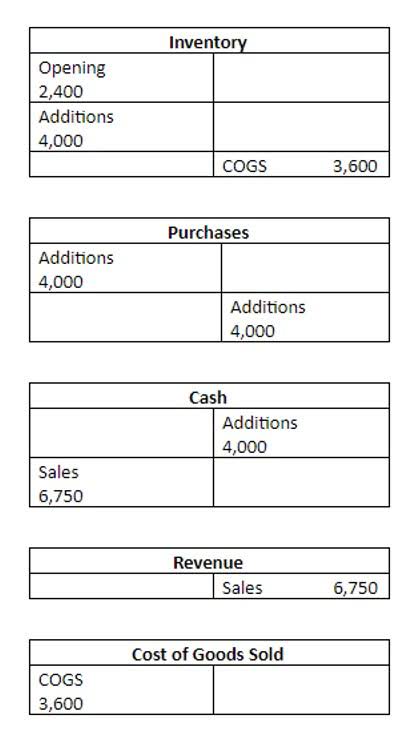
This exclusivity ensures that the client’s needs are catered to promptly and with expertise. It’s different from other pricing models in a way that the client or customer pays in advance for professional work to be determined later. You might also need a separate bill every month or every quarter https://www.bookstime.com/ that shows the additional costs you still have to cover, which are typically due upon receipt. Retainer fees provide numerous benefits for both clients and professionals in the finance and investment industries. The use of retainer fees has become increasingly popular as businesses seek greater efficiency and predictability in their external service engagements. In our example, let us consider a lawyer who charges a $500 retainer fee for potential clients seeking legal representation.

When to Consider Retaining an Attorney
Understanding how retainer fee structures work, their Accounts Receivable Outsourcing benefits, and best practices can significantly enhance the recruitment process for companies looking to hire top talent. One suggestion for service providers is to offer different tiers of retainer packages with varying levels of services included. This allows for greater flexibility when accommodating various client needs while still maintaining clear expectations around pricing. A legal retainer agreement is a document that specifies you will have an attorney-client relationship after you pay the retainer fee for a specific period. During this time, the contract lawyers might do legal work or be there to answer legal questions you have, like general information purposes. Before you hire a law firm for legal services, one of the main things you will discuss with the attorneys is legal fees.

Earned retainer fee
This fee is paid before any work begins, and as lawyers work on the case, they deduct their fees from the retainer, held in a dedicated account. An evergreen retainer is designed to ensure continuous service without interruption. Under this arrangement, the retainer fee is replenished regularly, often monthly, to maintain a constant balance. This type of retainer is common in ongoing professional relationships where services are needed on a regular basis, such as IT support or public relations. The evergreen retainer model benefits both the client and the service provider by ensuring a steady flow of work and payment.
- Other professionals, such as consultants or freelancers, may also insist on a retainer fee or agreement for certain projects (sometimes involving a purchase order as well).
- Funds that a client pays as a retainer are supposed to be kept in a separate trust account.
- Other states, like Florida, define it as an entry fee that is not deposited into a trust account.
- A retainer fee used as a deposit or prepayment for a project or service applies to the total cost.
- The lawyer (and the firm employing the attorney, if applicable) cannot use this money yet.
- In fact, often companies that hire a consultant on a retainer basis have a clause in their contract that prohibits them from working for the competition.
Is a retainer a deposit?
The attorney may discover that they have a conflict of interest that prevents them from working on the case. If this were to happen, the attorney would have to return the retainer paid by the client. By clearly defining services and costs up-front, potential how do retainer fees work disputes over the contractual agreement can be largely mitigated. Retainer agreements ensure that the client and professional have a clear understanding of what to expect from each other. Ethical professionals refund unearned fees, though local rules might apply.
A true retainer can last as long as the client and lawyer are happy with it. Retainers can be dangerous to a company if they aren’t managed properly or you are not tracking work very accurately. To know if you’re overdelivering, it’s important to be as clear as possible about the work you do under the retainer. Only then will you be able to see if you’re crossing the perimeters of the agreed scope or not.
Subscription Models

Remember though, that a proposal and a contract are two different things. The end of a project is an ideal time to transition to a retainer, as the client will also know you and the value you can bring to their business. Once you have your pitch ready and can articulate the value you can bring to a client, it’s time to incorporate the retainer concept into your proposals and pitches. If you are still thinking about how the overall process of retainer fee works.
Understanding Retainer Fees: Types, Calculations, and Agreements
- A less frequent type is the “general retainer,” paid to a lawyer simply to guarantee their availability to the client for a set period.
- Any remaining retainer fee after paying the invoiced amount should be returned to the client.
- ConsumerShield helps people and businesses understand their legal situations and find representation to assist them.
- That way, the attorney is sufficiently able to start working on a case with a base amount of funds allotted to the matter.
- The interface is polished, fast, fluid and intuitive, and the amount of features available are pretty amazing.
Then, establish the type and amount of work you’ll do during the retainer period. If you’re intrigued and looking to switch to retainers, you’ll need to consider how you’ll keep track of retainer periods and accurately attach work to each client’s agreement. Follow the steps below to set up an efficient retainer management system.

Real Results from Real Consultants
- These might include a base retainer fee for guaranteed access plus additional fees for specific deliverables, or milestone-based retainers tied to achieving specific outcomes over time.
- Most retainer fees cover a predetermined number of hours that the lawyer is expected to work on a case.
- The distribution of retainer fees can also vary based on milestones reached or hours worked, ensuring that both parties are satisfied with the progress and billing structure.
- The agreement is your legal contract should you choose to have a lawyer on retainer.
- Portions of retainer fees can be refunded if services end up costing less than originally planned.
- A contingency fee agreement provides that the lawyer does not get paid unless he wins the case.
If a lawyer spends less time on the matter than estimated, the additional amount would be refunded to the client. The majority of bar associations prohibit attorneys from charging a retainer fee that represents more hours than a case is likely to require. Clients maintain the right to end legal representation whenever they want during the contract if they are unhappy with the attorney. Setting a clear scope of work when you’re managing retainer projects is essential. Crafting a fair and mutually beneficial retainer agreement ensures everyone is happy at the end of the project. You’ll make the right amount of money while providing your client with the value they deserve.

